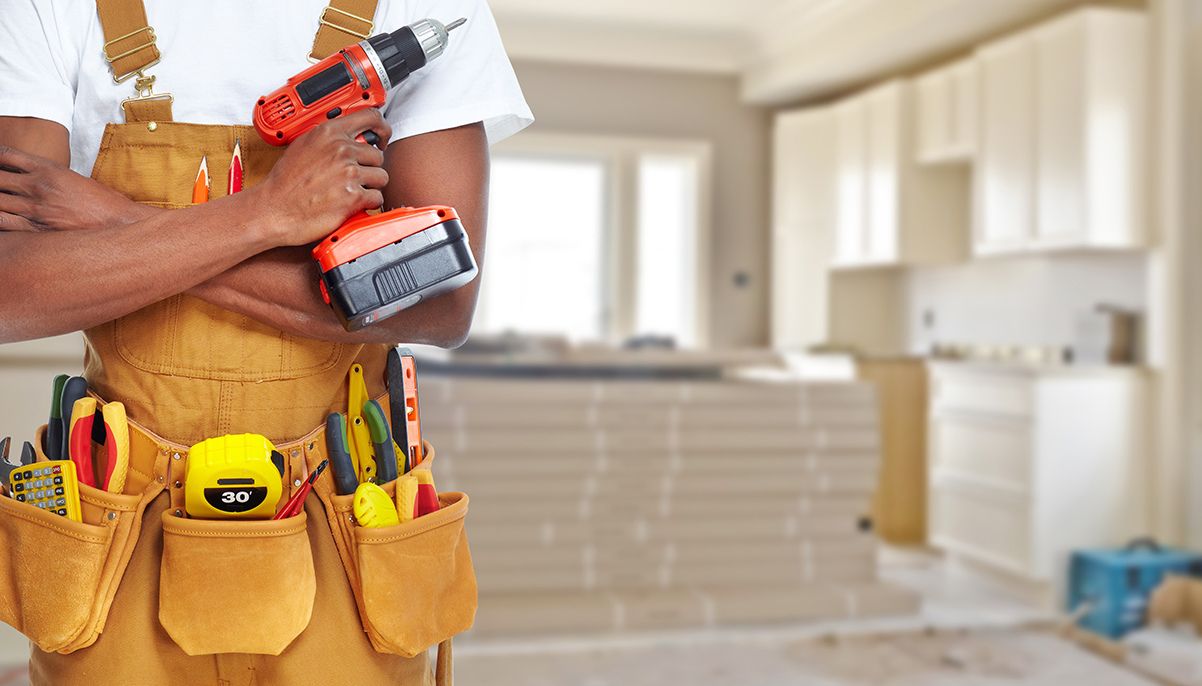Home>Renovation & DIY>Home Renovation Guides>How A Home Improvement Contractor Can Charge A Customer


Home Renovation Guides
How A Home Improvement Contractor Can Charge A Customer
Modified: January 9, 2024
Learn how a home improvement contractor can effectively charge a customer for their services with our comprehensive home renovation guides. Explore pricing strategies and tips for successful project estimates.
(Many of the links in this article redirect to a specific reviewed product. Your purchase of these products through affiliate links helps to generate commission for Storables.com, at no extra cost. Learn more)
Introduction
Welcome to the world of home improvement! Whether you're considering a small renovation or a major overhaul, hiring a home improvement contractor is a significant step in bringing your vision to life. However, one of the most common concerns for homeowners is understanding how home improvement contractors charge for their services. In this comprehensive guide, we'll delve into the various factors that can influence pricing, the different types of payment structures you might encounter, additional charges that may arise, and tips for negotiating pricing with your contractor.
Understanding how a home improvement contractor determines their fees can empower you to make informed decisions and ensure that you receive fair and transparent pricing for your project. So, let's roll up our sleeves and explore the intricacies of contractor pricing, shedding light on the often-murky waters of home improvement costs.
Key Takeaways:
- Understand the factors affecting home improvement pricing, including project scope, materials, and location. This knowledge empowers you to make informed decisions and evaluate contractor quotes effectively.
- Negotiate pricing with your contractor by researching, defining clear expectations, and fostering open communication. Collaboration and transparency lead to fair and satisfactory agreements for your home improvement project.
Factors Affecting Pricing
Several key factors can influence the pricing structure of a home improvement project. Understanding these factors can provide valuable insight into the costs involved and help you make informed decisions when hiring a contractor. Here are some of the primary considerations that can impact the pricing of home improvement services:
- Scope of the Project: The size and complexity of the project play a significant role in determining the overall cost. Larger projects or those requiring specialized skills and materials will naturally incur higher expenses.
- Materials and Labor: The cost of materials, as well as the labor required to complete the project, are fundamental components of the pricing structure. High-quality materials and skilled labor will contribute to a higher overall cost.
- Timeline: The timeframe for completing the project can impact pricing. Contractors may charge more for expedited timelines or offer discounts for projects with flexible deadlines.
- Permits and Regulations: Compliance with building codes, obtaining permits, and adhering to regulatory requirements can add to the overall cost of the project.
- Location: Regional variations in labor costs, availability of materials, and local regulations can influence pricing. Projects in urban areas may incur higher expenses compared to those in rural settings.
- Complexity and Customization: Projects that involve intricate designs, custom features, or specialized requirements may command higher prices due to the additional time and expertise involved.
- Market Conditions: Fluctuations in the construction market, including supply and demand dynamics, can impact pricing for home improvement services.
By considering these factors, you can gain a clearer understanding of the elements that contribute to the pricing of a home improvement project. This insight will enable you to engage in more informed discussions with potential contractors and better evaluate the quotes and proposals you receive.
Types of Payment Structures
Home improvement contractors typically offer various payment structures to accommodate the diverse needs and preferences of their clients. Understanding these payment options can help you choose the most suitable arrangement for your project. Here are some common types of payment structures you may encounter when engaging a home improvement contractor:
- Lump Sum or Fixed Price: This straightforward payment structure involves a predetermined total price for the entire project. It provides clarity and predictability, as the cost remains constant regardless of any fluctuations in labor or material expenses.
- Cost-Plus or Time and Materials: Under this arrangement, the client pays for the actual cost of materials and labor, along with an additional percentage or fixed fee for the contractor’s services. While it offers transparency, it can entail more financial risk for the homeowner if the project encounters unforeseen challenges or cost overruns.
- Progress Payments: With this approach, the total project cost is divided into installments based on project milestones or specific time intervals. Payments are made as the project progresses, providing the contractor with a steady cash flow and allowing the homeowner to monitor the project’s advancement.
- Deposit and Final Payment: Some contractors may require a deposit upfront, often to cover initial material costs or secure the project schedule. The remaining balance is then paid upon project completion and satisfactory inspection.
- Payment Schedules for Larger Projects: For extensive renovations or construction projects, a customized payment schedule may be established, outlining specific payment milestones tied to project phases or completion of major tasks.
Each payment structure has its own advantages and considerations, and the most suitable option for your project will depend on factors such as project size, duration, budget, and your comfort level with financial risk. It’s essential to discuss payment structures with potential contractors and ensure that the chosen arrangement aligns with your preferences and provides the necessary financial protection.
When charging a customer, a home improvement contractor should consider the cost of materials, labor, permits, and any additional services. It’s important to provide a detailed estimate and contract to ensure transparency and avoid any misunderstandings.
Additional Charges
When engaging a home improvement contractor, it’s important to be aware of potential additional charges that may arise during the course of the project. Understanding these potential costs can help you anticipate and budget for expenses beyond the initial project quote. Here are some common additional charges to consider:
- Change Orders: If you decide to make alterations to the project scope or specifications after the work has commenced, the contractor may issue change orders, which can lead to additional costs for labor, materials, or design modifications.
- Unforeseen Structural Issues: During the project, unexpected structural issues or hidden damage may be uncovered, necessitating additional repairs or modifications that were not initially accounted for in the project estimate.
- Permit Fees: Obtaining necessary permits for the project may incur additional fees, particularly if there are revisions or extensions to the original permit application.
- Specialized Services: If the project requires specialized services such as engineering consultations, architectural drawings, or subcontracted work, these services may result in additional charges.
- Cleanup and Disposal: Proper disposal of construction debris and waste removal may involve additional fees, especially for larger projects or those involving hazardous materials.
- Delays and Overtime: Unforeseen delays or requests for accelerated project timelines may lead to additional charges for extended labor hours or expedited work schedules.
- Finishing Touches and Upgrades: Any last-minute upgrades, finishing touches, or additional features requested by the homeowner during the project can result in supplementary costs.
By understanding these potential additional charges, you can engage in open discussions with your contractor to address how such costs will be handled and how they may impact the overall project budget. Clear communication and transparency regarding potential additional charges will contribute to a more harmonious working relationship and help prevent financial surprises along the way.
Negotiating Pricing
When it comes to home improvement projects, negotiating pricing with your contractor can be a crucial aspect of ensuring a fair and satisfactory arrangement for both parties. Effective negotiation requires clear communication, a willingness to understand each other’s perspectives, and a focus on reaching mutually beneficial terms. Here are some tips for negotiating pricing with a home improvement contractor:
- Research and Comparisons: Before entering negotiations, conduct thorough research to understand the typical pricing ranges for similar projects in your area. Obtaining multiple quotes and comparing the services and pricing offered by different contractors can provide valuable leverage during negotiations.
- Define Clear Expectations: Clearly outline your project requirements, expectations, and budget constraints to the contractor. This will help align both parties’ understanding of the scope of work and the financial parameters within which the project needs to be completed.
- Flexibility and Trade-Offs: Be open to discussing various aspects of the project that could be adjusted to meet budgetary constraints, such as material choices, project timelines, or the possibility of phasing the work over multiple stages.
- Transparency and Open Communication: Establish open and transparent communication with the contractor regarding your budget limitations and any concerns about the proposed pricing. This can foster a collaborative approach to finding solutions that accommodate both your needs and the contractor’s business requirements.
- Clarify Payment Terms: Clearly define the payment schedule, payment methods, and any potential penalties or incentives related to project milestones and completion dates. Clarity on payment terms can contribute to a smoother negotiation process.
- Value-Added Services: Discuss the potential inclusion of value-added services or enhancements that the contractor can offer within the proposed pricing, such as extended warranties, maintenance packages, or post-project support.
- Written Agreements: Once negotiations are finalized, ensure that all agreed-upon terms, pricing adjustments, and project details are documented in a written contract to avoid misunderstandings or disputes in the future.
By approaching pricing negotiations with a collaborative and solution-oriented mindset, you can work towards establishing a fair and transparent agreement with your contractor. Effective negotiation can lead to a positive working relationship, clear expectations, and a successful outcome for your home improvement project.
Conclusion
Embarking on a home improvement project is an exciting endeavor, and understanding the intricacies of contractor pricing is essential for a smooth and successful experience. By considering the factors that influence pricing, familiarizing yourself with different payment structures, and being aware of potential additional charges, you can approach the process with confidence and clarity.
When negotiating pricing with a home improvement contractor, open communication, thorough research, and a collaborative mindset can pave the way for a fair and mutually beneficial agreement. Remember that transparency, clear expectations, and a well-documented contract are key elements in establishing a solid foundation for your project.
As you navigate the world of home improvement, keep in mind that finding the right balance between cost and quality is paramount. While budget considerations are important, focusing solely on the lowest price may not always yield the best results. Prioritize value, expertise, and a strong rapport with your chosen contractor to ensure a positive and rewarding home improvement journey.
Ultimately, by arming yourself with knowledge and a thoughtful approach to pricing and negotiations, you can set the stage for a successful collaboration with a home improvement contractor, bringing your vision to life and creating a space that truly reflects your unique style and needs.
Frequently Asked Questions about How A Home Improvement Contractor Can Charge A Customer
Was this page helpful?
At Storables.com, we guarantee accurate and reliable information. Our content, validated by Expert Board Contributors, is crafted following stringent Editorial Policies. We're committed to providing you with well-researched, expert-backed insights for all your informational needs.















0 thoughts on “How A Home Improvement Contractor Can Charge A Customer”